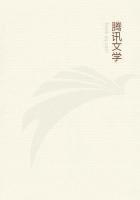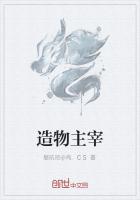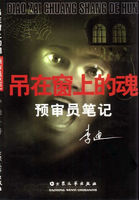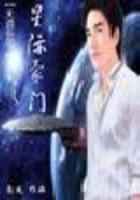Henry the Eighth was not interred in this mausoleum, but in Saint George's Chapel, as has just been mentioned, and as he himself directed, "midway between the state and the high altar." Full instructions were left by him for the erection of a monument which, if it had been completed, would have been truly magnificent.The pavement was to be of oriental stones, with two great steps upon it of the same material.The two pillars of the church between which the tomb was to be set were to be covered with bas-reliefs, representing the chief events of the Old Testament, angels with gilt garlands, fourteen images of the prophets, the apostles, the evangelists, and the four doctors of the Church, and at the foot of every image a little child with a basket full of red and white roses enamelled and gilt.Between these pillars, on a basement of white marble, the epitaphs of the king and queen were to be written in letters of gold.
On the same basement were to be two tombs of black touchstone supporting the images of the king and queen, not as dead, but sleeping, "to show," so runs the order, "that famous princes leaving behind them great fame do never die." On the right hand, at either corner of the tomb, was to be an angel holding the king's arms, with a great candlestick, and at the opposite corners two other angels hearing the queen's arms and candlesticks.Between the two black tombs was to rise a high basement, like a sepulchre, surmounted by a statue of the king on horseback, in armour--both figures to be "of the whole stature of a goodly man and a large horse." Over this statue was to be a canopy, like a triumphal arch, of white marble, garnished with oriental stones of divers colours, with the history of Saint John the Baptist wrought in gilt brass upon it, with a crowning group of the Father holding the soul of the king in his right hand and the soul of the queen in his left, and blessing them.The height of the monument was to be twenty-eight feet.
The number of statues was to be one hundred and thirty-four, with forty-four bas-reliefs.It would be matter of infinite regret that this great design was never executed, if its destruction by the Parliamentary plunderers would not in that case have been also matter of certainty.
Charles the First intended to fit up this structure as a royal mausoleum, but was diverted from the plan by the outbreak of the civil war.It was afterwards used as a chapel by James the Second, and mass was publicly performed in it.The ceiling was painted by Verrio, and the walls highly ornamented; but the decorations were greatly injured by the fury of an anti-Catholic mob, who assailed the building, and destroyed its windows, on the occasion of a banquet given to the Pope's nuncio by the king.
In this state it continued till the commencement of the present century, when the exterior was repaired by George the Third, and a vault, seventy feet in length, twenty-eight in width, and fourteen in depth, constructed within it, for the reception of the royal family.Catacombs, formed of massive octangular pillars, and supporting ranges of shelves, line the walls on either side.
At the eastern extremity there are five niches, and in the middle twelve low tombs.A subterranean passage leads from the vault beneath the choir of Saint George's altar to the sepulchre.Within it are deposited the bodies of George the Third and Queen Charlotte, the Princesses Amelia and Charlotte, the Dukes of Kent and York, and the last two sovereigns, George the Fourth and William the Fourth.
But to return to the reign of Edward the Fourth, from which the desire to bring down the history of Saint George's Chapel to the present time has led to the foregoing digression.About the same time that the chapel was built, habitations for the dean and canons were erected on the north-east of the fane, while another range of dwellings for the minor canons was built at its west end, disposed in the form of a fetterlock, one of the badges of Edward the Fourth, and since called the Horse-shoe Cloisters.The ambulatory of these cloisters once displayed a fine specimen of the timber architecture of Henry the Seventh's time, when they were repaired, but little of their original character can now be discerned.
In 1482 Edward, desirous of advancing his popularity with the citizens of London, invited the lord mayor and aldermen to Windsor, where he feasted them royally, and treated them to the pleasures of the chase, sending them back to their spouses loaded with game.
In 1484 Richard the Third kept the feast of Saint George at Windsor, and the building of the chapel was continued during his reign.
The picturesque portion of the castle on the north side of the upper ward, near the Norman Gateway, and which is one of the noblest Gothic features of the proud pile, was built by Henry the Seventh, whose name it still bears.The side of this building looking towards the terrace was originally decorated with two rich windows, but one of them has disappeared, and the other has suffered much damage.
In 1500 the deanery was rebuilt by Dean Urswick.At the lower end of the court, adjoining the canons' houses behind the Horse-shoe Cloisters, stands the Collegiate Library, the date of which is uncertain, though it may perhaps be referred to this period.The establishment was enriched in later times by a valuable library, bequeathed to it by the Earl of Ranelagh.
In 1506 Windsor was the scene of great festivity, in consequence of the unexpected arrival of Philip, King of Castile, and his queen, who had been driven by stress of weather into Weymouth.The royal visitors remained for several weeks at the castle, during which it continued a scene of revelry, intermixed with the sports of the chase.At the same time Philip was invested with the Order of the Garter, and installed in the chapel of St.George.

